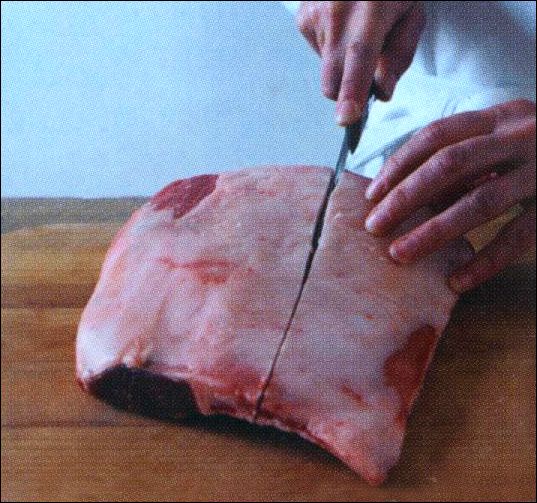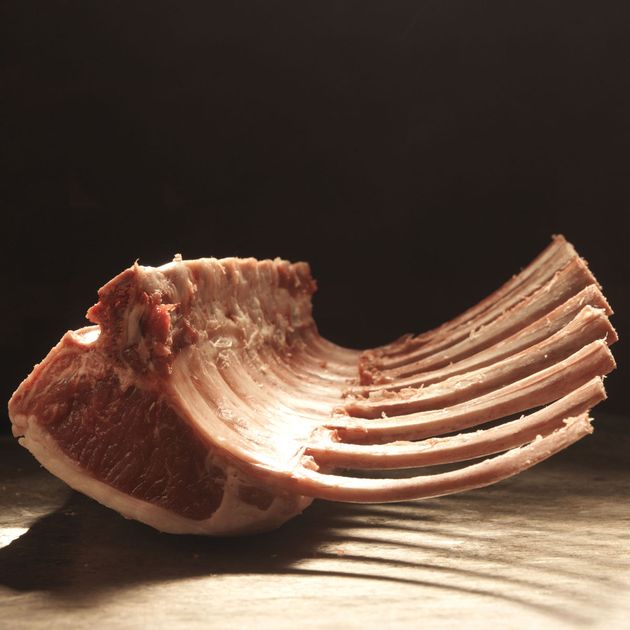Advertisement
How to French a Rack of Lamb
Published 2007
Be sure to have the butcher cut off the chine bone to make carving easier.
Find the small muscle at one end of the large loin muscle and make a line, about ½ inch out from this muscle.
Cut down to the bone.
Draw the knife all the way across the length of the rack.
Pull back the flaps of meat and fat on the shoulder end.
Cut out the shoulder blade.
Follow the line you made and cut all the way down to and between the ribs. Scrape the knife against the ribs to loosen the tissue.
Cut through the membrane along the center of the ribs and push the membrane to the sides with the knife. Don’t cut through it.
Push the meat to the side and back around the bone with a spoon handle.
Pull away any meat and fat clinging to the bones.
Scrape off any membrane clinging to the ribs.
Cut down through the center of the rack and pull away the thick layer of fat and meat that covers the shoulder end. This ensures that both ends cook in the same amount of time.
Trim excess fat off the loin end, but don’t cut all the way down to the meat.
Cut away the long cordlike nerve that runs along the back of the rack.
Trim the meat away from the fat on the trimmings, and put the meat, cut into strips, in the roasting pan with the stew meat and chine bone.
Assemble the trimmings, stew meat, and chine bone in the roasting pan.
Arrange the seasoned rack, meat side up, on the trimmings. Roast until the ends spring back when you push on them or until an instant-read thermometer inserted into the center of the rack reads 125°F.
Cover the meat loosely with aluminum foil and let rest before carving. Cut between the bones in even slices.




















